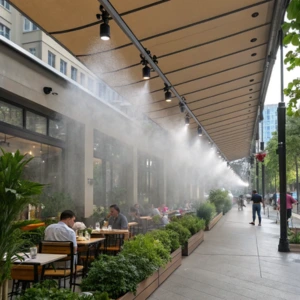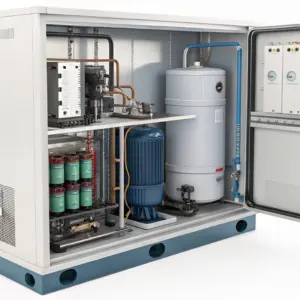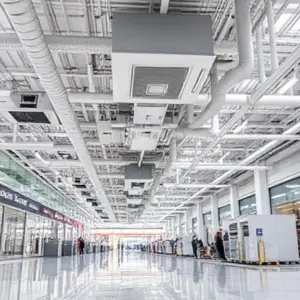Air Conditioner Radiator and Adiabatic mist cooling system
Enhance the efficiency of your air conditioning and refrigeration systems with our adiabatic misting and radiator cooling systems. Designed for HVAC pre-cooling, these systems help lower ambient air temperatures before they reach the condenser coil—boosting performance, reducing energy usage, and extending the lifespan of your equipment.
Why Pre-Cooling Is Critical ?
During summer months, HVAC systems struggle to maintain performance. Without pre-cooling:
Cooling capacity drops
Power consumption spikes
Systems risk overheating and shutdowns
Maintenance frequency increases
Occupant comfort is compromised

What Is an Adiabatic Misting System?
An adiabatic misting system works by spraying a fine mist of water around the intake area of HVAC or refrigeration units. As this mist evaporates, it cools the surrounding air by up to 12°C, significantly improving heat exchange efficiency in condenser coils
Features & Benefits
1
Energy Efficiency: Reduces power consumption by up to 30%.
3
System Longevity: Less strain on mechanical parts increases equipment lifespan.
4
Improved Cooling: Boosts HVAC performance during high-temperature conditions.
4
5
Cost Savings: Lower energy bills and reduced maintenance needs.
Advantage
Reduce system downtime
Lower carbon footprint
Increase comfort for building occupants and livestoc
Minimal water usage with high-efficiency nozzles
Application

Commercial and industrial air-conditioning units

Refrigeration systems

Poultry and dairy farms

Goat, rabbit, cow & buffalo farms

HVAC systems in malls, offices, and factories
Product Features
Mid-pressure misting pumps for optimal water atomization
Easy integration with existing HVAC infrastructure
Automated controls for precision cooling and water management
Rust- and corrosion-resistant components for durability
